Let’s talk about keeping your ticker in tip-top shape! Slippin’ some heart-healthy foods into your daily chow is like giving your cardiovascular system a high-five. Want to dodge the heart disease bullet? Well, it’s all about munchin’ on the good stuff, the nutrient-packed foods that play nice with your cholesterol.
Table of Contents
Key Takeaways
- Integrate nourishing choices that bolster cardiovascular well-being into your daily diet to maintain the vitality of your heart.
- Embrace a wholesome dietary regimen as a means to regulate the levels of cholesterol within your physiological system.
- Mitigate the probability of encountering heart-related ailments by incorporating nourishment rich in essential nutrients.
- Opt for discerning choices that contribute to the robustness of your heart, cultivating a lifestyle geared towards enhanced well-being.
- Safeguard the health of your cardiac organ by consuming sustenance actively promoting the vitality of your cardiovascular system.
Beans: A Nutritional Powerhouse for Heart Health
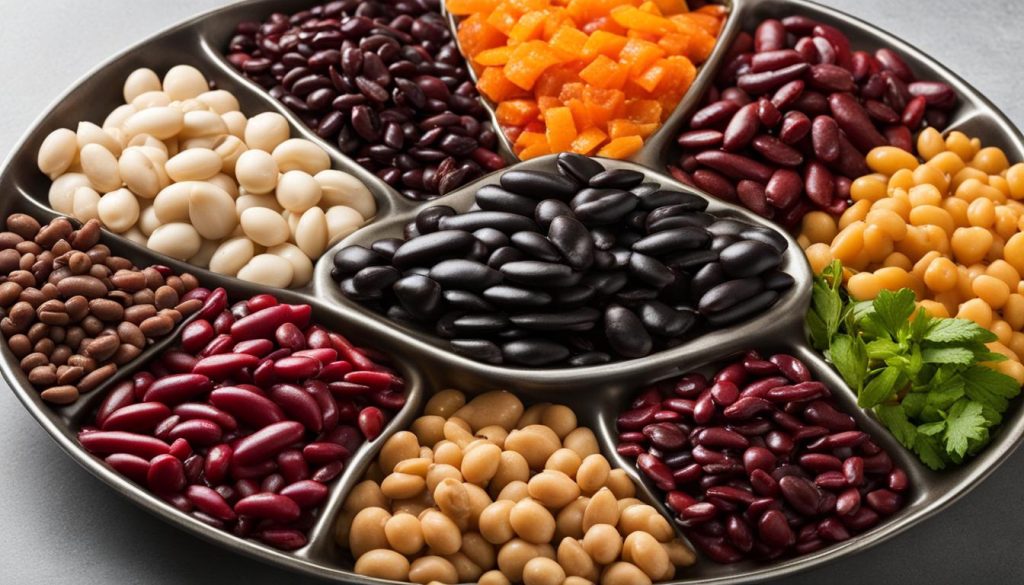
Hey there, when we talk about grub that’s good for your ticker, beans take the crown! These little fellas aren’t just tasty, but they pack a punch when it comes to keeping your heart in tip-top shape. Tossing beans into your chow is like giving your heart a high-five and treating your taste buds to a flavor fiesta.
These legumes aren’t just beans, they’re like the superheroes of Heartland. They swoop in, lower the bad cholesterol, dodge heart diseases, and make your cardiovascular system dance happily. All thanks to their fiber magic – the secret sauce for a heart-healthy menu. Fiber is the VIP that keeps cholesterol in check and helps you stay on the scale’s good side, crucial in the battle against heart issues.
But wait, there’s more! Beans aren’t just about fiber; they’re like little antioxidant warriors. Picture them shielding your cells from nasty free radicals, playing a superhero, and keeping inflammation at bay. Pop some beans in your meals, and you’re giving your heart a cozy, protective bubble.
So, why not make beans your heart’s BFF? Toss them in salads, or soups, or whip up a bean stew – your heart will thank you with every beat. It’s not just about eating; it’s like a heart-loving celebration on your plate. Go on, give those beans a starring role in your menu, and let your heart do a happy salsa!
Fiber Content in Different Beans
| Bean Type | Fiber Content (per 1 cup, cooked) |
|---|---|
| Black Beans | 15 grams |
| Chickpeas | 12.5 grams |
| Lentils | 15.5 grams |
“Beans are an excellent source of fiber, which is essential for heart health. Incorporating a variety of beans into your meals can help control cholesterol levels and reduce the risk of heart disease.”
Who says adding beans to your grub means waving goodbye to flavor town? That’s a load of baloney! There’s a whole treasure trove of lip-smacking recipes out there where beans steal the show – from hearty soups that hug your taste buds to salads bursting with flavor. Dive into a bean bonanza, mix and match those legumes, and turn your heart-healthy meals into a fiesta for your taste buds.
So, in a nutshell, beans are the rockstars of heart-healthy foods. These bad boys bring the A-game – fiber to keep cholesterol in check, antioxidants to shield against heart hiccups, and a passport to Flavorville with meals that’ll make your taste buds throw a party.
Don’t believe the myth that healthy means boring. Beans are here to prove that wrong. They’re not just ingredients; they’re the superheroes of your plate, saving the day and making your heart go, “Thanks for the love!” So, dive into the bean adventure, make those meals sing, and let your heart do a happy jig. Beans, my friend, are the secret spice of a heart-healthy, flavor-packed life
Support Cardiovascular Health For Healthy Aging And Longevity
Fatty Fish: Omega-3s for a Healthy Heart

When we dive into heart-healthy foods, fatty fish is the rockstar you want front and center. Picture this: salmon and tuna taking center stage, loaded with omega-3 fatty acids – the unsung heroes for your heart’s well-being, battling away the baddies and warding off heart disease like superheroes.
Now, these omega-3 fellas in fatty fish? They’re not just hanging out but throwing a party for your heart. They swoop in, kick out inflammation from your blood vessels, lower that blood pressure, and give triglyceride levels a gentle nudge down. The result? A heart that’s doing a happy dance and a lower risk of heart disease looming over you.
Bringing fatty fish into your food game is a breeze and downright delicious. Shoot for two servings a week, and you’ll be high-fiving your heart. Grill or bake those fish fillets for a wholesome main course or toss some canned salmon or tuna into salads or sandwiches – quick, easy, and satisfying. Your heart will thank you with each tasty bite!
Quote: “The omega-3 fatty acids found in fatty fish offer several benefits for your heart.”
Now, let’s kick the fish game up a notch – not just for the taste but also for the health kick! Before you work your culinary magic, throw that fish into a dance party of olive oil, lemon juice, and a sprinkle of herbs. It’s like giving your fish a spa day, loading it up with heart-loving antioxidants that’ll have your cardiovascular system singing praises.
Don’t let the excitement steer you into a fish-eating frenzy. It’s all about balance, amigo. Sure, omega-3s are the heart’s best buds, but let’s not forget about the not-so-friendly mercury lurking around in fishy waters. Go for the smart move – pick fish pals that are low on the mercury scale. Think salmon, trout, or sardines – they’re like the A-listers of the fish world, bringing flavor without the unwanted mercury drama. Your heart will thank you, and so will your taste buds!
Table: Omega-3 Content in Common Fatty Fish
| Fatty Fish | Omega-3 Content (per 100g) |
|---|---|
| Salmon | 1.5-2.5g |
| Tuna | 0.2-1.5g |
| Mackerel | 1.5-2.5g |
| Sardines | 1.5-2.5g |
Heart-Healthy Foods That Offer Delicious Protection
Making sure your diet’s got those heart-healthy foods is key to keeping your cardiovascular health in tip-top shape. Tuck into nutrient-packed foods and stick to a balanced diet, and you’ve got a solid game plan for handling cholesterol levels and cutting down on the risk of heart disease.
Heart-Healthy Foods Cooking Tips
Here’s a smart move for your heart-friendly kitchen adventures – go for olive oil. This liquid gold is a healthy fat loaded with antioxidants that wrap your heart in protection. Swap out the not-so-healthy fats like butter and bring in olive oil to the cooking scene. It’s a game-changer, dialing down those cholesterol levels and giving your heart a high-five. Drizzle it on bread, jazz up veggies, or let it work its magic as a salad dressing – a tasty twist for your heart’s delight.
And that’s not all – throw walnuts into the mix for a double dose of heart-healthy goodness. These nutritional powerhouses pack omega-3 fatty acids, champions in the fight against cholesterol and artery inflammation. Toss a handful of walnuts into salads, or baked treats, or simply snack on them. Your heart will thank you for this crunchy, omega-3-packed upgrade.
Heart-Healthy Foods Recipe: Quinoa Salad
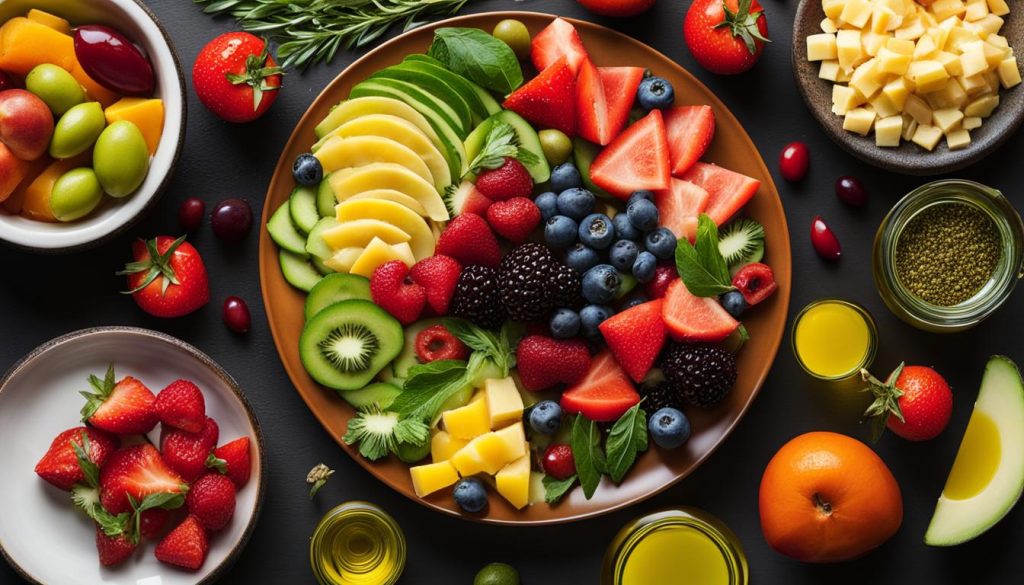
“The quinoa salad was flavorful, refreshing, and packed with nutrients. It’s a perfect heart-healthy dish that you can easily prepare at home.” – Sarah
Quinoa – the health wizard of grains, packing a punch with fiber and plant-based protein. Take that cooked quinoa, and team it up with chopped veggies like cucumbers, tomatoes, and bell peppers. Now, here’s where the party gets started – a zing of lemon juice, a drizzle of olive oil, and a sprinkle of walnuts for that extra kick to your heart’s delight. Mix it all up, toss it like you mean it, and bam – you’ve got yourself a quinoa salad, tasty and full of goodness. Go ahead, dive in, and enjoy the wholesome awesomeness!
| Ingredients | Instructions |
|---|---|
| 1 cup cooked quinoa | 1. Cook quinoa according to package instructions. |
| 1 cucumber, diced | 2. Chop cucumber into small pieces. |
| 1 tomato, diced | 3. Dice the tomato into small cubes. |
| 1 bell pepper, diced | 4. Chop the bell pepper into small pieces. |
| Juice of 1 lemon | 5. Squeeze the juice from one lemon. |
| Drizzle of olive oil | 6. Drizzle olive oil over the salad. |
| Handful of walnuts | 7. Sprinkle walnuts on top. |
| Salt and pepper to taste | 8. Season with salt and pepper according to your preference. |
| 9. Toss all the ingredients together until well combined. |
Here’s the lowdown: if you want to show your heart some love and keep the health train rolling, get on board with heart-happy eats like olive oil and walnuts. And here’s the kicker – dive into heart-friendly recipes, like the quinoa salad. It’s not just about eating; it’s about savoring every tasty step towards a heart-happy life. So, chop, mix, and toss your way to a delicious and heart-protected lifestyle. Your taste buds and ticker will thank you!
Promote Cognitive Function With This NaturallySourced Spermidine
Walnuts: A Nutritional Powerhouse for Heart Health Food
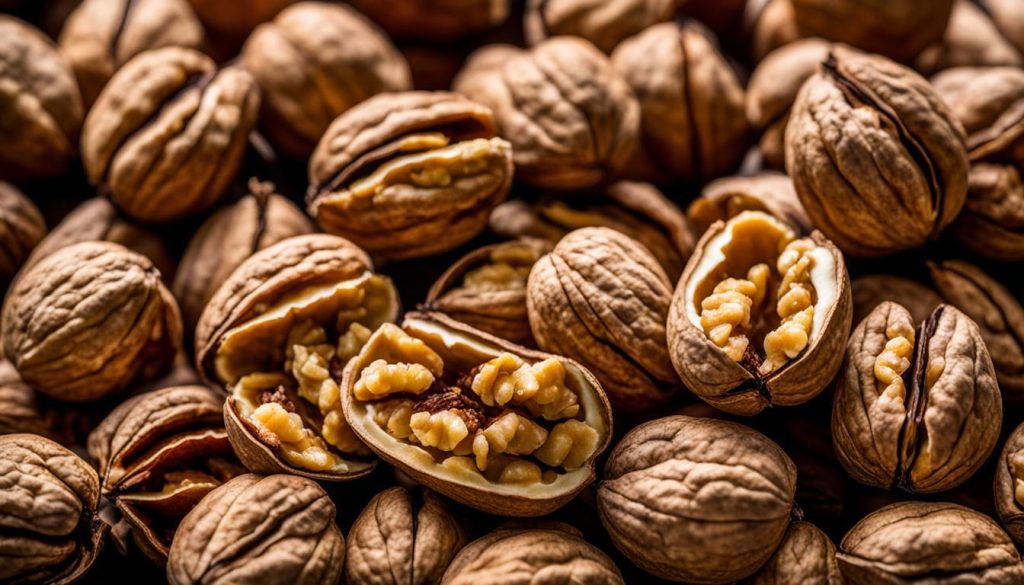
In the quest for robust cardiac wellness, walnuts emerge as a paramount choice for dietary enrichment. These diminutive yet formidable kernels are laden with cardioprotective compounds, notably omega-3 fatty acids, acclaimed for their substantial contributions to cardiovascular vitality.
Omega-3 fatty acids are esteemed for their capacity to mitigate inflammation and curtail cholesterol levels, both pivotal in thwarting heart maladies. Research corroborates that habitual intake of walnuts is efficacious in diminishing levels of LDL cholesterol, the nefarious variant.
Beyond their omega-3 riches, walnuts boast a confluence of fiber, protein, and antioxidants, synergistically fortifying cardiac health. This amalgam of nutrients establishes walnuts as a nutritional colossus, instrumental in augmenting cardiovascular functionality and diminishing heart disease susceptibility.
Incorporating walnuts into one’s diet presents a plethora of avenues. They can embellish salads, meld into yogurt or oatmeal, or stand alone as a wholesome nibble. For those seeking culinary inspiration that favors cardiac health, behold a succinct and facile recipe that celebrates walnuts:
“Walnut-Encrusted Baked Salmon”
Ingredients:
- 4 salmon fillets
- 1 cup walnuts, finely chopped
- 2 tablespoons Dijon mustard
- 2 tablespoons honey
- 1 tablespoon olive oil
- Salt and pepper to taste
Directions:
- Preheat the oven to 375°F (190°C).
- In a small bowl, mix together the Dijon mustard, honey, and olive oil.
- Season the salmon fillets with salt and pepper, then brush the mustard mixture onto the top of each fillet.
- Press the finely chopped walnuts onto the mustard-coated side of the salmon fillets.
- Place the salmon fillets on a baking sheet lined with parchment paper and bake for 12-15 minutes, or until the salmon is cooked through.
This flavorful recipe combines the heart-healthy benefits of walnuts with omega-3-rich salmon for a delicious and nutritious meal that is sure to please your taste buds and your heart.
Tossing some walnuts into your meals is a no-brainer when it comes to keeping your ticker ticking happily. Whether you’re jazzing up your salads or munching on them straight out of the bag, these little gems are bursting with goodness that your heart will thank you for.
So, why not grab a handful of these crunchy delights? It’s a tasty little move that packs a big punch for your heart’s health. Give your heart a loving embrace with every bite!
Leafy Green Vegetables: Heart-Healthy Nutrients in Every Bite
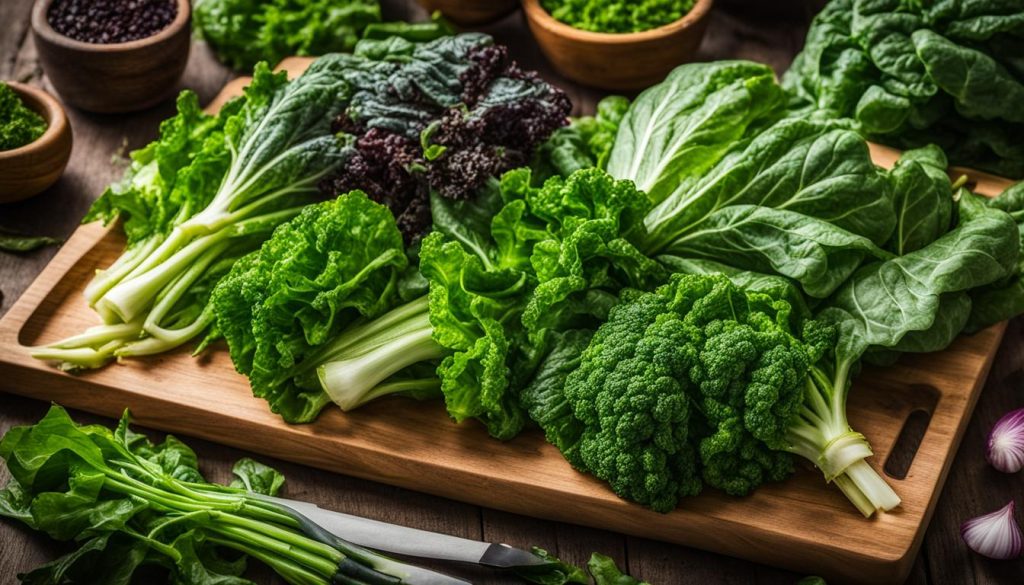
Embedding verdant, leafy vegetables within one’s nutritional regimen emerges as a straightforward yet delectable strategy to fortify cardiac wellness. These chlorophyll-laden botanicals are a cornucopia of nutrients, proffering an array of benefits for the heart, thus establishing themselves as an indispensable component of any healthful diet.
Verdant greens are abundant in antioxidants, agents that shield the cardiac system against oxidative duress and inflammation. These potent molecules are instrumental in mitigating cardiac ailment risks by averting arterial damage and fostering salubrious sanguine circulation.
Moreover, these foliar vegetables are characterized by their minimal caloric content yet are profuse in dietary fiber, positioning them as stellar candidates for weight regulation and cholesterol management. The fibrous matter within these plants aids in the reduction of LDL cholesterol, colloquially deemed the nefarious cholesterol, a predominant peril in cardiac disease.
Among the most propitious foliar greens for cardiac health are spinach, kale, arugula, and Swiss chard. These botanicals are adaptable and can be savored through a plethora of modalities. Whether interwoven into salads, gently sautéed with garlic and olive oil, or amalgamated into smoothies, leafy greens furnish a luscious and nutrient-rich avenue for cardiac protection.
The Benefits of Leafy Green Vegetables for Heart Health
Leafy green vegetables stand as bastions of nutrition, brimming with cardioprotective nutrients essential for bolstering your cardiovascular vitality. Incorporating a diverse array of greens into your dietary regime is pivotal in diminishing the risk of heart ailments, regulating cholesterol quantities, and supplying pivotal antioxidants for the zenith of cardiac functionality.
Here are some key benefits of incorporating leafy green vegetables into your diet:
- Rich in antioxidants that protect against heart disease
- Low in calories and high in fiber, aiding in weight management
- Help lower LDL cholesterol levels
- Provide essential vitamins and minerals for heart health
- Promote healthy blood pressure and blood clotting
Infusing your meals with leafy green vegetables is both effortless and delightful. Consider mixing a handful of spinach into your morning omelet or integrating kale into your preferred smoothie blend. Alternatively, Swiss chard can be sautéed with garlic and olive oil for a delectable accompaniment. The culinary opportunities are boundless!
| Leafy Green | Antioxidant Content | Fiber Content | Vitamin K Content |
|---|---|---|---|
| Spinach | High | 2.2g per cup | 145% DV |
| Kale | High | 2.6g per cup | 684% DV |
| Arugula | Moderate | 0.7g per cup | 21% DV |
| Swiss Chard | Moderate | 3.7g per cup | 374% DV |
Try This 30 Seconds Ritual to Balance Your Blood Sugar
Conclusion
To safeguard the vitality of your cardiac system, embracing a diet enriched with cardioprotective nourishments and embedding these sustenances into your culinary regimen is paramount. Such practices can substantially mitigate the peril of cardiac ailments, thus fostering prime vascular well-being.
Incorporate a cornucopia of cardioprotective edibles into your fare, including legumes, oily piscine, Olea europaea extract, juglans, and verdant greens. These comestibles abound in vital nutrients, antioxidative compounds, and omega-3 lipids, which are instrumental in diminishing cholesterol quantum, harmonizing sphygmus, and assuaging arterial inflammation.
Concoct your repasts to encompass these cardioprotective selections, be it through the amalgamation of legumes into your broths or greens, relishing a portion of oily piscine bi-weekly, employing olea europaea extract for culinary purposes, garnishing your preferred platters with juglans, or weaving verdant greens into your quotidian diet. Minor modifications of this nature can exert a profound influence on your cardiac welfare.
Bear in mind, that the genesis of a cardioprotective lifestyle is predicated upon the culinary choices you forge. By giving precedence to cardioprotective dietary habits and weaving these nutrient-dense comestibles into your repast schematics, you embark on a proactive crusade for the preservation of your cardiac health, heralding a more salubrious tomorrow.
FAQ
What’s on the menu for a happy heart?
Chowing down on foods that are bursting with nutrients is like giving your heart a big hug. We’re talking about goodies like beans, the oily goodness of fatty fish, a drizzle of olive oil, crunchy walnuts, and a pile of greens as high as a mountain.
How do beans work their magic on our hearts?
Imagine beans as tiny, but mighty heart heroes. They’re jam-packed with stuff like folate and magnesium that make your heart dance with joy. They’re like a secret weapon against high blood pressure and naughty cholesterol, thanks to being loaded with fiber.
What’s the big deal with fatty fish and our tickers?
Fatty fish, such as salmon and tuna, are swimming in omega-3 fatty acids. These slick nutrients are like ninjas fighting off heart rhythm shenanigans, pushing down blood pressure, and slashing triglyceride levels. They’re superstars for keeping our tickers ticking smoothly.
How does olive oil make our hearts sing?
Olive oil is like liquid gold for your heart. Packed with antioxidants, it kicks saturated fats to the curb and helps keep cholesterol in check. Whether you’re cooking up a storm, dressing a salad, or jazzing up your bread, olive oil is your go-to for heart happiness.
Why are walnuts a heart’s best friend?
Walnuts are tiny but mighty with their omega-3 fatty acids, acting like a shield against cholesterol and inflammation in the arteries. Just a handful a day keeps the heart doctor away, making them a snacking no-brainer.
What’s the green light for heart health in leafy veggies?
Leafy greens like spinach and kale are the superheroes of the veggie world. Packed with antioxidants, vitamins, and dietary nitrates, they’re all about lowering blood pressure and keeping blood clots in check. Adding a dash of greens to your plate is like giving your heart a green thumbs up.

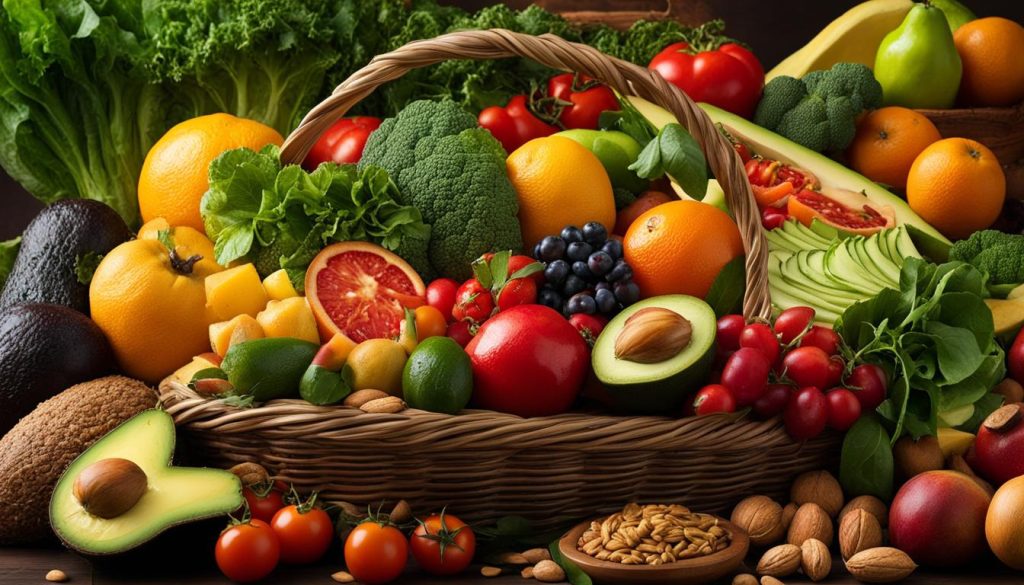


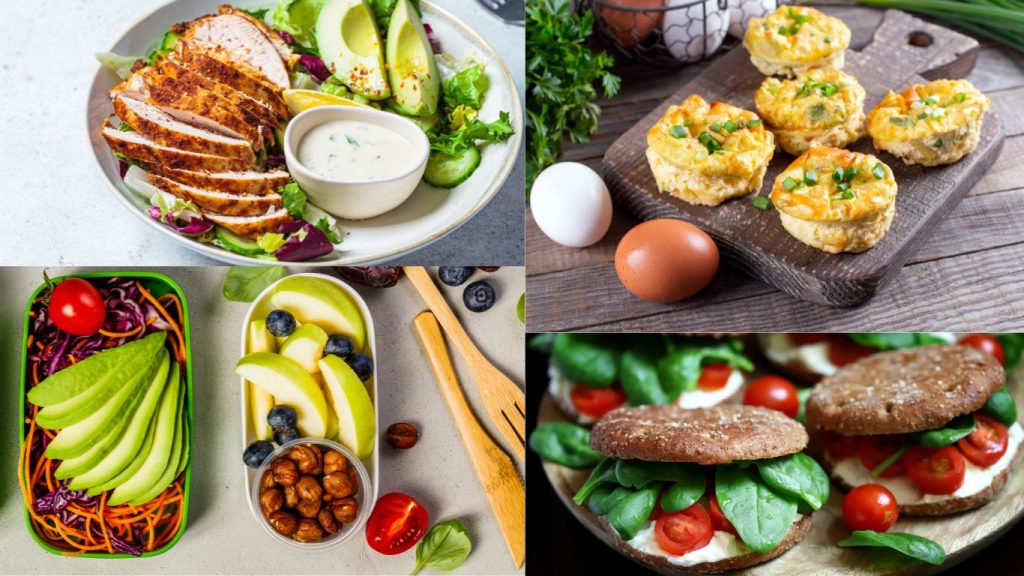



Thanks for sharing. I read many of your blog posts, cool, your blog is very good.